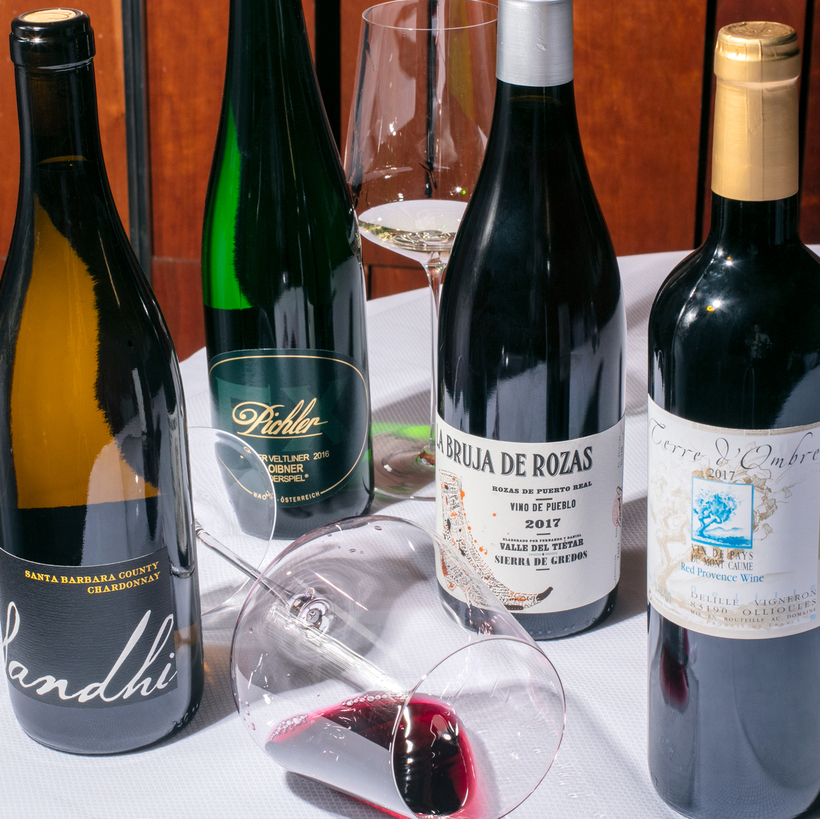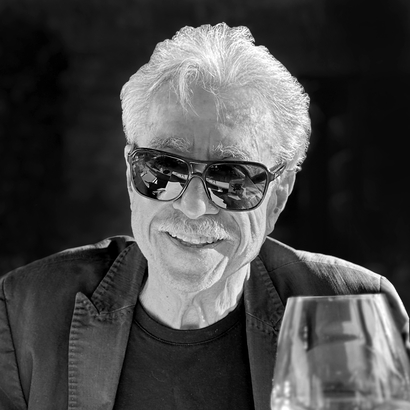One evening in the early 1980s, I learned everything I needed to know about house wines.
It was dinner hour at the Quilted Giraffe, Barry Wine’s inspirational and regrettably short-lived restaurant on Second Avenue in New York. Back then, almost every celebrated fine-dining establishment in Manhattan was on the East Side, and almost all but the Quilted Giraffe were classic French.
The restaurant was not known for wine, although it should have been. I looked up from my plate, and on a nearby shelf stood a single bottle of 1980 Bordeaux. When I asked the waiter what it was doing there, he said it was the house wine.
An Eye-Opener
Until that moment, I had thought of a house wine as a beverage in exile, undocumented and unloved, traveling without credentials. This particular bottle had a label from a prestigious estate, which I recall as Château Giscours, but I could be mistaken. When I reached Wine to ask him if he had a record of his house wines of that era, he said he did not. Even the best house wines are easily forgotten.
The year 1980 was a mediocre-vintage year, cold and wet, producing what the Bordelais called “restaurant wines,” reasonably priced, unlikely to age well, and best for immediate drinking. They were candidates for classification as house wines if the restaurant was honest, or for putting on wine lists at inflated prices if it was not, the idea being that poorly educated but well-heeled wine drinkers wouldn’t know enough about vintages to realize they were being overcharged.
Until that moment, I had thought of a house wine as a beverage in exile, undocumented and unloved, traveling without credentials.
The wine was bright and delicious, as good as it was ever going to get—a formative moment for me. I understood immediately that there was a whole world of reasonably priced wines out there far superior to the jugs of supermarket swill that were then the foundation of American quaffing.
What I didn’t know, and only realized when I got in touch with Wine, is that he had already moved past house wines and was introducing diners to a more sophisticated level of drinking: wines by the glass. The decade before, when the Quilted Giraffe was located in the Hudson Valley, Wine had offered astonishing Thursday-night specials of first-growth Bordeaux by the glass. He recalls the price as “most likely $1.75 or so.”
A Vanishing Breed
These days house wines are vanishing, except at the humblest of restaurants, and wines by the glass are flourishing. I spoke to wine directors, head sommeliers, and chefs at six of the most prestigious restaurants in America, all with superb wine lists, to learn their opinion of today’s house wines, and to learn about their wine-by-the-glass programs.
Aldo Sohm, wine director of Le Bernardin, in New York, and former winner of the Best Sommelier of the World competition, was alone in praising old-style house wines. Nevertheless, he was far from effusive.
“House wines were fine when wine was a commodity,” he said, “but now you need a broader range. House wines are very old-school. I loved the house wines in the old Italian trattorias because they were about simplicity, which can be delicious, but if you come to Le Bernardin, you need a broader range; you expect a little more.”
Others—from Restaurant Daniel, Del Posto, and Sushi Nakazawa, in New York; Patina, in Los Angeles; and Everest, in Chicago—were less generous with their assessments of house wines. Their positive comments were restrained, their descriptions encompassing “casual,” “entry-level,” “thirst quenchers,” “inexpensive.” Raj Vaidya, head sommelier at Daniel, thought that these days they have a “negative association.”
Two of the restaurants, Patina and Daniel, have programs that straddle the line between house wine and wines by the glass: They have relationships with wineries and have created cuvées made especially for them, elevating the concept of house wine. These specially made bottlings are commonly offered by the glass and occasionally by the bottle on the restaurants’ wine lists.
Restaurant Daniel has a Robert Moncuit Mesnil Grand Cru “Cuvee Daniel” Champagne that isn’t entirely different from the regular Robert Moncuit Blanc de Blancs Champagne Grand Cru, but is made to the specifications of the restaurant’s wine team. At Patina, chef and founder Joachim Splichal established a relationship with Jim Clendenen of Au Bon Climat 30 years ago, and it continues to this day. From the start, he and Clendenen worked together on the assemblage of the wines, bottled under the Patina name. They first made Chardonnay, then Pinot Noir, later Merlot.
Wines by the Gallon?
Del Posto offers a staggering Italian-wine list, currently exceeding 3,000 bottles and ever expanding, much like the universe. (Want a five-gallon—that’s not a misprint—bottle of 1971 Giuseppe Mascarello Barolo? Del Posto has it.) “We do have wines by the glass,” says wine director Evan Clagnaz, “and we use them to showcase our cellar. In the fall we poured 2008 Bruno Giacosa Santo Stefano Barbaresco for $40 a glass—it’s $200 on the wine list. We tell customers to tell us what they want to spend on wine and let us do our thing.”
I told Dean Fuerth, beverage director of Sushi Nakazawa, that I couldn’t understand why a sushi restaurant would require a wine list as expansive as his, which includes a multitude of wines by the glass. Currently there are 15, plus sakes by the glass. I generally think of all sushi as having similar flavor profiles.
The list at Everest, in Chicago, incorporates one of the largest collections of older vintages in the world.
He’d heard that before. He happily lectured me on the nuances of Nakazawa’s omakase, how the sugar in some of the dishes calls for a slightly sweet wine such as Condrieu, while vinegared rice can obliterate an ill-chosen dry white. “The fish, while delicate, is very flavorful,” he pointed out.
Everest, in Chicago, is a restaurant of chef Jean Joho, who came to America from the French region of Alsace, which shares a love of Riesling with Germany, just across the border. Little else about Germany is beloved by Alsatians, understandable considering how many wars were fought over the territory, how many times it has changed hands.
Joho says that in the 1960s, not long after World War II, “the Germans would come into Alsace in their Mercedeses and dine at the smaller family restaurants, where their check would be 20 or 30 percent higher than those of other customers. The proprietors didn’t like them, but they were happy they came.”
Joho calls his food “French with implants of Alsace,” often due to the wines he uses in his sauces. His love of Alsatian wines is obvious, his list incorporating one of the largest collections of older vintages in the world.
“If you ask for a house wine,” he said, “you only care if it is red or white. With a glass, you see the bottle, the producer, the vintage. In France, customers only know the wines from the regions they come from. If they are from Bordeaux, they do not know Burgundy.”
Then he offered the best explanation for the ascent of wines by the glass in this country: “In America,” he says, “customers know wine.”
Alan Richman writes about food and wine for Air Mail


